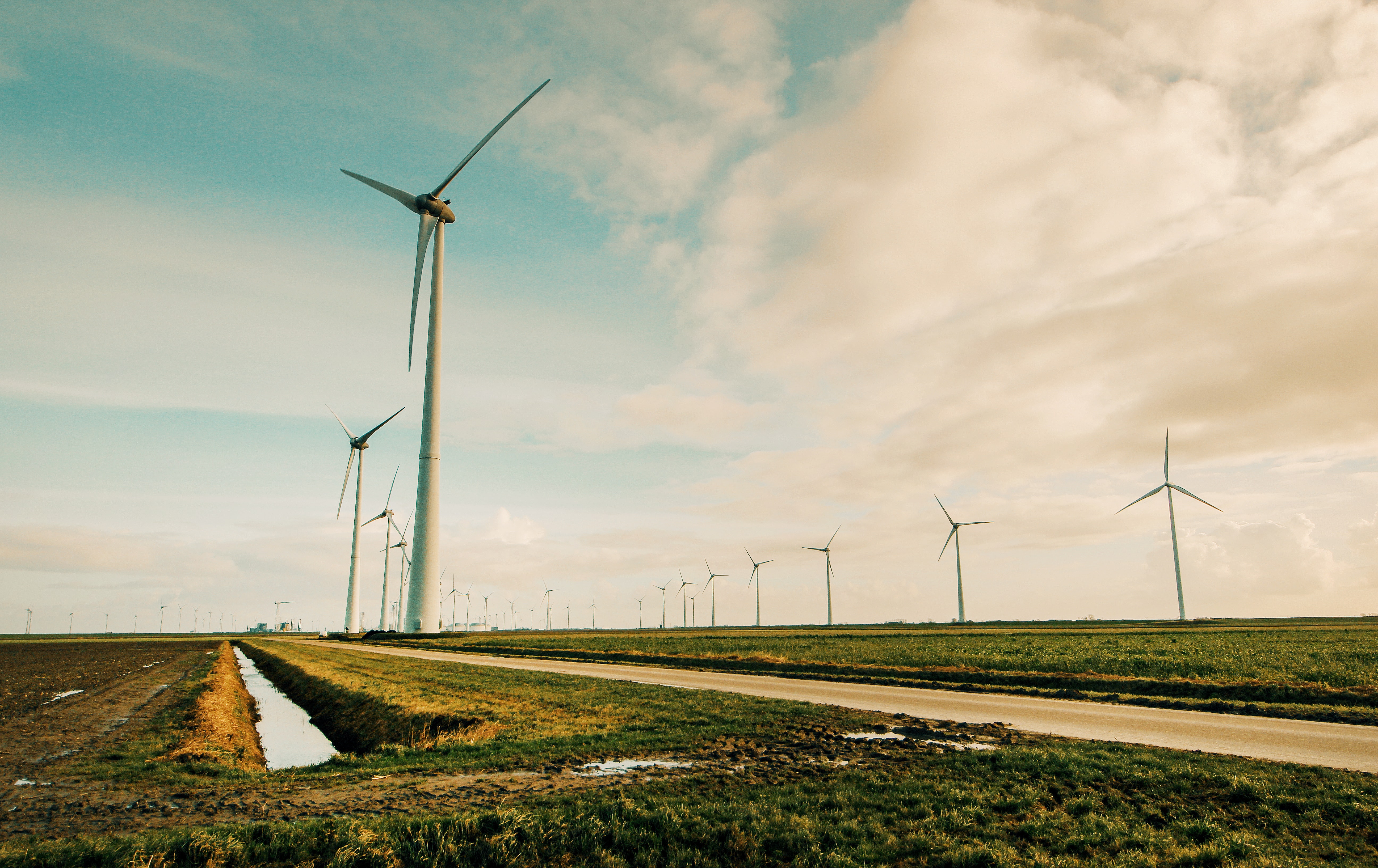Wind energy stocks continue to play a significant role in the world’s transition to net zero emissions. Climate change risk has become a reality, leading to the emergence of decarbonization. This has paved the way for green energy stocks. The wind energy industry witnessed its second-best year in 2021, after a record year in 2020. However, rapid deployment of wind power capacity globally will not be enough to reach net zero emissions by 2050.
The Growth Opportunity in Wind Energy
The Global Wind Energy Council reported astounding data on wind energy’s growth potential.
- In 2021, almost 94 GW of wind energy capacity and more than 88 GW of wind capacity was awarded globally (up 153% year-over-year).
- Global offshore wind capacity surged threefold to 21.1 GW in 2021, with China accounting for 80% of this new capacity.
- Under current policies, the Council expects 557 GW of new wind energy capacity by 2026, which translates to more than 110 GW of new installations each year.
However, the above growth is insufficient to achieve the pathway to 1.5C global warming and net-zero by 2050. The wind energy capacity has to quadruple by 2030 to achieve the target. This calls for more policy and government support. The Russia-Ukraine war and the resulting energy crisis in Europe have aggravated the need for alternatives to Russian oil and gas. Wind energy is a viable alternative, although energy generation is subject to climate conditions.
The United States is giving significant incentives like a 30% investment tax credit for offshore wind projects that start construction before 2026. The country aims to deploy 30 GW of offshore wind by 2030.
Five Wind Energy Stocks
The next five to eight years could see significant growth in wind energy. You can harness this opportunity by investing in the below stocks:
NextEra Energy
NextEra Energy is the world’s largest wind power producer, generating 18 GW capacity from 119 wind projects in the U.S. and Canada. It expects to build 5.95-7.9 GW of new wind energy projects and over 1.4 GW of wind re-powering projects by 2024. Apart from wind, NextEra also develops solar, nuclear, and natural gas projects and is a leader in battery storage.
In 2021, NextEra’s adjusted EPS surged more than 10% to US$2.55, achieving a 10-year CAGR (compounded annual growth rate) of ~9%. The company expects its 2022 EPS to surge 7%-12% in 2022 and continue growing at an average annual rate of 6-8% through 2025.
NextEra stock is trading at 25 times its forward EPS, which is a fair valuation for the stock. The stock has dipped 23% year-to-date, increasing its dividend yield to 2.4%. It has been growing dividends for the last 27 years and will grow them in future as more projects come online.
NextEra Energy Partners
NextEra Energy has a broader energy portfolio. But its infrastructure subsidiary NextEra Energy Partners has significant exposure to wind energy. More than 80% of its ~7 GW of renewable energy comes from wind. It also has natural gas pipeline capacity and solar and energy storage assets.
Both NextEra Energy and NextEra Energy Partners trade on NYSE under different tickers. NextEra Energy’s ticker is NEE and has a market cap of US$139.8 billion. NextEra Energy Partners’ ticker is NEP and has a market cap of US$5.6 billion. NEP has a higher dividend yield of 4.15%, thanks to the regular cash flow from long-term wind energy supply agreements. It increases cash flows by acquiring clean energy assets, making it ideal for dividend seekers.
NEP is the second on my list as it is trading at a higher forward PE ratio of 36.
Northland Power
Like NEP, Northland Power has significant exposure to wind energy (58% of its assets are wind energy). This Canada-based renewable energy producer is the fourth-largest offshore wind operator. It has around 2GW of wind energy projects in operation, from which it earns over 75% of its adjusted EBITDA. Over the next two years, the company plans to make 2.9GW projects operational. These projects could add $600 million in Adjusted EBITDA every year (a 50% increase). For the long term, it has 12 GW of wind energy projects in the pipeline.
Northland Power has better stock statistics, with an $8.8 billion market cap and a forward PE ratio of 30. However, Northland Power makes it third on my list because of a 3.09% dividend yield.
TransAlta Renewables
TransAlta Renewables is another Canadian renewable energy company with significant exposure to wind energy. It has almost 3GW of generating capacity from 26 wind facilities, 13 hydroelectric facilities and other natural gas and solar projects. Its wind projects are located in Canada and the United States. The company increases cash flows by developing new projects and acquiring wind and solar projects.
In 2021, TransAlta acquired the 206 MW Windrose wind project and 49% economic interest in the 137 MW Skookumchuck wind facility. Its 2021 adjusted EBITDA was unchanged due to lower wind resources and extended outage at the Kent Hills 1 and 2 wind facilities in the Canadian Wind segment. However, it expects the new acquisitions to increase adjusted EBITDA by 9% in 2022.
TransAlta has an attractive valuation of 25 times its forward EPS and a dividend yield of 5.27%. But it is a small-cap stock (market cap of $4.74 billion). Moreover, the company has not increased dividend since July 2017, which pushes this stock to the fourth position on my list.
Boralex
Canadian company Boralex is France’s largest independent onshore wind power producer, with 2 GW of wind energy capacity. It has more than 3 GW of wind and solar projects under development. In April, it signed an agreement to develop three wind power projects of 400 MW each in partnership with Énergir and Hydro-Québec. Boralex aims to reach over 10 GW of wind and solar capacity by 2030.
The $3.99 billion market-cap stock makes it last on my list for its 53.5 forward PE ratio makes it expensive compared to the above four stocks. Moreover, it has a lower dividend yield of 1.7%.
Wind Energy Stocks: Final Takeaway
Wind energy is growing rapidly, and wind stocks are benefitting from government policies and support. There are some short-term headwinds like rising steel prices and slowing economic growth that is making wind stocks volatile. But the above five stocks have significant potential to deliver dividend growth and boost stock prices. Staying invested in these stocks until 2025 and beyond can bring good returns.
Disclosure: The author holds no position mentioned in this article. Freedom Stocks has a disclosure policy.









